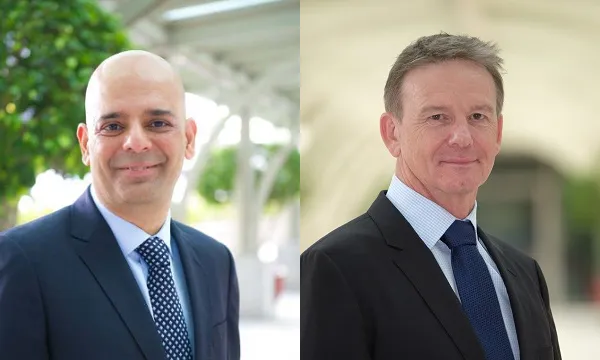
Asian Development Bank invests in Asian renewables developers' maiden green bonds
It has injected a total of $175m into AC Energy and B.Grimm Power to fund plant developments.
The global green bond market has ballooned to $173b as more renewable energy companies in the US, Europe, and China issue these instruments to finance plant development. But for the rest of Asia, these green bonds are still in their nascent stage. In an attempt to tap into their potential in the region, Asian Development Bank (ADB) has recently invested $20m and $155m in the maiden green bonds of AC Energy and B.Grimm Power, respectively.
In an interview with Asian Power, Jackie B. Surtani, director of Infrastructure Finance - East Asia, Southeast Asia and the Pacific, and Noel Peters, principal safeguards specialist at the Private Sector Operations Department, discussed the process of securing the deals for these two companies, the cost of getting climate bond certifications, and from where future issuers could come from.
What factors do you consider before investing in companies' green bonds?
Jackie B. Surtani: When we look at a company, we first look at two things. Firstly, the project or the company is creditworthy so that we are prepared to lend money to it and it is able to pay us back. So irrespective of whether it's a green bond or normal loan, it doesn't matter, our credit analysis would be the same. Both B.Grimm Power and AC Energy are very strong companies from a credit perspective.
Secondly, we're the Asian Development Bank so our development mandate is very clear. We want to make sure that we are lending to companies that are doing renewable energy projects. We didn't lend to Ayala Corporation, we lent to its subsidiary AC Energy whose mandate is to do renewable energy projects, not only here in the Philippines, but also in Vietnam and Indonesia.
It's very common to issue green bonds. Basically, it's a capital market instrument in Europe and the US but you don't see it so much here in Asia. It was nice to see these two companies issue green bonds. We'd like to see a lot more, because most companies tend to just do a corporate loan, whether it's with local banks or international banks. It's effectively like a loan, so our analysis would be very similar to a loan.
Why do you think companies should pick a green bond over a corporate loan?
Surtani: A corporate loan is provided by commercial banks, which can be local or international. Companies can also approach multilaterals like ADB and the International Finance Corporation (IFC), so that's sort of different sources of financing a bond. There can also be a private placement or issues on a stock market, but the investors in a bond are pension funds, asset management companies, family offices. It's a different class of investors.
One of a company’s main reasons to issue a green bond is to diversify. To issue a green bond is a really good thing for a company to do because what they're saying is that they are a renewable energy company and they’re doing an environmentally friendly project. It's very good for the corporate image.
Noel Peters: The class of investors that Jackie mentioned are particularly interested in green sustainable financing. Pension funds, superannuation funds, and foreign power investors are all looking to investing money into something that they know has good sustainability.
Institutional investors have actually been the main drivers behind the green bond market because their stakeholders are very demanding of them. Instead of them having to go and do the due diligence report required on their investments, they know that if a bond is labelled green then automatically, it's going to be the type of investment that shareholders would like to invest in.
They also take a long-term view and recognise that these kinds of investments are the investments for the future because they want to be around a long time. They see these as a more sustainable investment as well.
Surtani: The total green bond market in the world is something like $173b in 2017, whilst it was worth $0.5b in 2008. That green bond market is primarily in Europe and the US. It's still very much in its infancy here in Asia and China. What you see here is a lot of banks issue green bonds, but still, not many corporates have caught on to this. It's very, very exciting. We're very happy and privileged to have been involved in these two recent green bond issuances.
How do you think green bonds will grow in Asia in the near future?
Surtani: I can't tell you how big will it grow, but I can certainly tell you that what we've already seen is that our involvement in this AC Energy green bond, for example, has got some very good publicity. As a result of that publicity, a lot of other corporates here in the Philippines have already approached us (and asked) if they could do it similarly.
In Thailand, that's attracted publicity in the Thai market. I think other corporates are now saying if B.Grimm Power can do it, or AC Energy can do it, we should at least explore the possibility whether it makes sense for us as well.
Just be wary about the difference in a bond versus a loan. Why can’t everybody do green bonds and not do any loans? With a bond, you need to make sure that you have the ability to use a hundred million or deploy that hundred million from day one. There are pros and cons for a bond versus a loan. It's not going to be just a situation where everybody's going to move from a loan to a green bond. There are pluses and minuses for both types of financial instruments.
Peters: ASEAN countries are doing a lot of work in trying to develop the bond market as well and the green bond market. It’s the focus of the ASEAN nations to try and grow green bonds, I think, that's another element worth discussing.
How was the process of investing or giving issuing bonds to AC Energy and B.Grimm Power?
Surtani: It comes back to your first question. How do we evaluate these? We evaluated these transactions exactly as we would evaluate a normal loan. So the process, and I think the key to your question is the quality of the information and the professionalism of the client.
In this case, the process was actually very smooth and very good. The experience, I think, was very good for both of us, because the professionalism of both B.Grimm Power and AC Energy have worked. We had access to very senior management in both companies. For any questions that we had or other members of the ADB team had, especially our risk department, they were able to answer all our questions. The time it took us to process that deal internally was also relatively smooth. Some transactions and some companies take a little bit longer, because our access to information takes a little bit longer. But in these two cases, it was actually a relatively quick and in good process.
Peters: The other thing that I think is important to mention is that especially for B.Grimm Power, we actually gave them advice and supported the green part of the issuance of the green bond, which is something that we're prepared to do for anyone who's coming to express interest in us and get involved with their green bond.
What sort of advice is that?
Peters: Certification is key. We actually funded the certification for B.Grimm Power. We're actually doing evaluations by providing an advisor in support services to make it easy for (companies) to issue.
Surtani: The part that ADB plays - and this is where Noel comes in - is this certification by the Climate Bonds Initiative. This is a certification that is (given) by this sort of separate entity, that this is a proper green bond. It's very helpful.
How significant will green bonds be in Asia in 2019?
Surtani: I don't have a statistic or I don't have a crystal ball to say how significant will it be. I think, with the more issuers you see — like AC Energy and B.Grimm Power — the more companies you will see following that trend and saying, it clearly is something good.
I think just generally, in Asia, there's a lot of people who are promoting green bonds, including investment banks. But how many companies are actually capable of issuing a green bond? It's anybody's guess. But I'm hopeful that the volume will increase now that you've seen a couple of issuances like this.
Peters: You need to have the assets, and you need to have the need to raise finance to fund those assets.
Are there any companies that have already expressed interest in green bonds, like aside from AC Energy and B.Grimm Power?
Surtani: I cannot disclose them to you because we're subject to confidentiality. But like I said, we have had approaches as a result of that.
From which countries are these companies trying to do green bond issuances?
Surtani: In terms of markets, I would certainly hope you would see more in Thailand and the Philippines. Vietnam has a lot of renewable energy assets, but they're still under construction or they're not in operation. So I think that will need a little bit more time.
Maybe (there’s some) in Indonesia. In some of the Southeast Asian countries, you can certainly see some pickup in activity and green bonds in the next few years.
Peters: Part of why we're doing this is to actually develop the market. If this was a market that was flooded with green bonds, then ADB doesn't need to be part of it. But it's still very much in its early stages, which is why we're so excited about it.
Surtani: I would say it will increase in the Philippines. In the Philippines, green is becoming much more important. I went to a forum recently and spoke about green bonds with lots of Filipino banks and government agencies. There's a real interest.
What issues have you encountered with AC Energy and B.Grimm Power?
Surtani: I wouldn't say there are any issues. But we have to do our due diligence on every deal, including every project that ADB does, as they have to meet our safeguard standards. In Noel’s case, he was kind of like wearing two hats on both deals. He was helping them with this climate bonds certification, but also making sure that these two corporations have what we call an environmental and social management system that abides by ADB safeguards. In these two companies’ cases, they're very strong and well established, so there's no real sort of problems. We just have to explain to them that these are our requirements.
The other thing with bonds is timing is key. We were approached in the first week of December, but we were able to sign this deal on 30 January. It was a very, very short process. I think the timing is not an issue but a challenge. It took a lot of people to make sure that we got it done
Peters: We find that the companies who are going into the green bond space already have their mind on reputation issues, and they are quite mature in that in that kind of evolution.
For potential renewables companies, what issues could arise, especially in this region?
Peters: A company that has one wind project that just started construction would be difficult to finance with a green bond. We typically seek those with a portfolio of projects, someone with operations, someone with construction. You need a little bit of a critical mass. There's a cost to it.
The cost is not in the “green”, the cost is in the bond. A vanilla bond has a cost associated with it. For the actual green bit, the cost is almost zero. The obstacles that we're talking about are the same as for just a financial instrument.
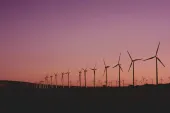
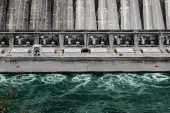
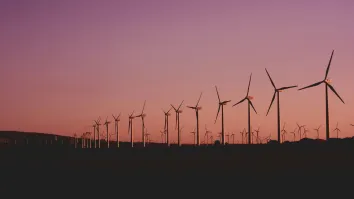

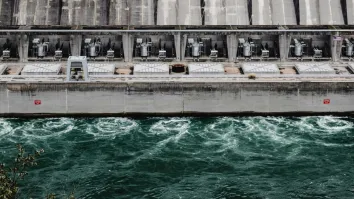
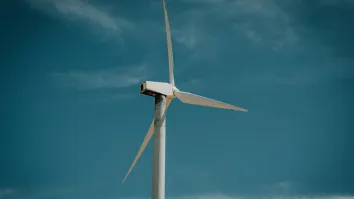













 Advertise
Advertise






